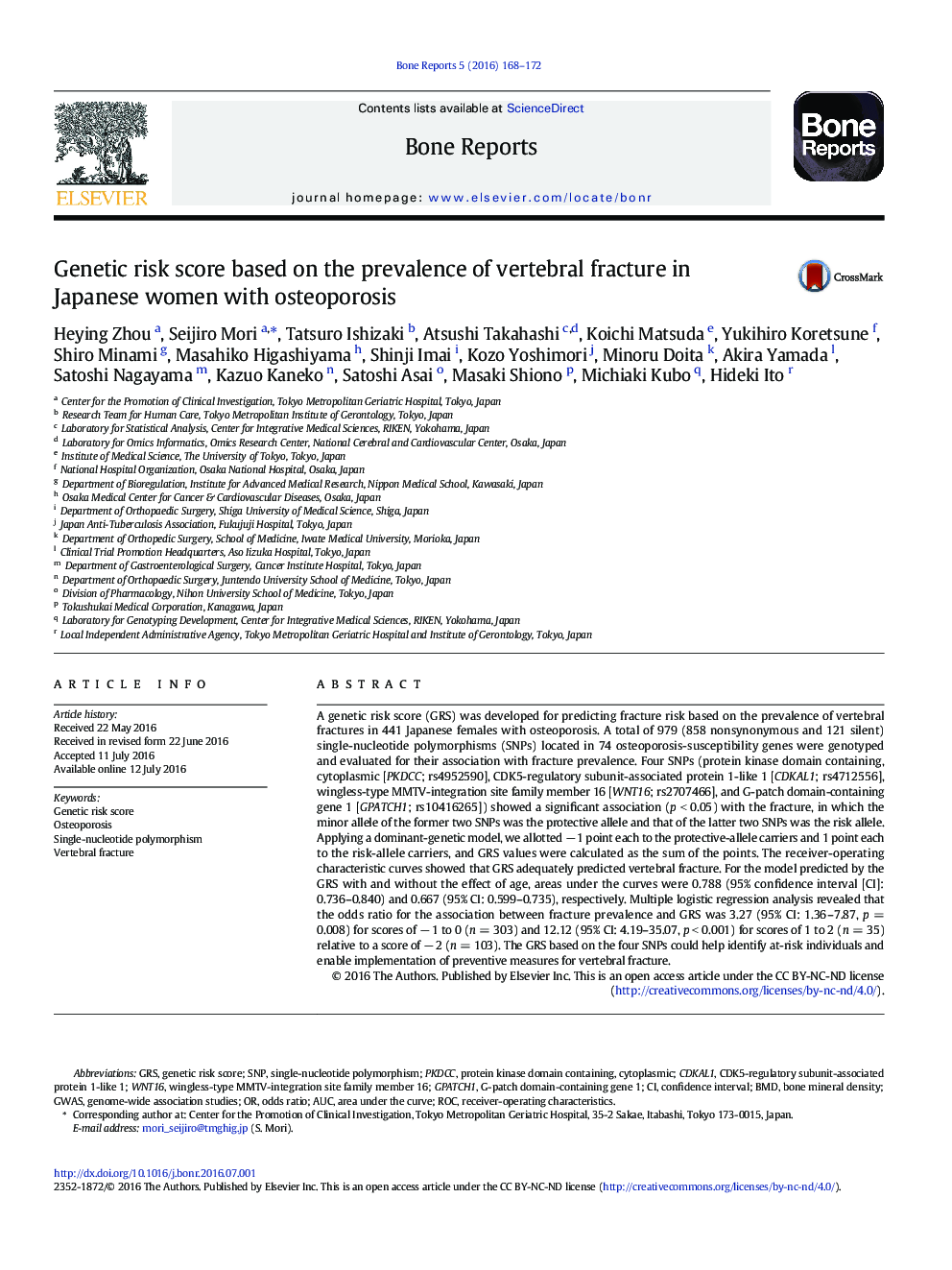| کد مقاله | کد نشریه | سال انتشار | مقاله انگلیسی | نسخه تمام متن |
|---|---|---|---|---|
| 2792317 | 1568667 | 2016 | 5 صفحه PDF | دانلود رایگان |
• A genetic risk score to predict fracture risk based on vertebral fracture prevalence is proposed.
• Four single-nucleotide polymorphisms showed significant association with fracture.
• This method helps identify at-risk individuals and promotes preventive measures for fractures.
A genetic risk score (GRS) was developed for predicting fracture risk based on the prevalence of vertebral fractures in 441 Japanese females with osteoporosis. A total of 979 (858 nonsynonymous and 121 silent) single-nucleotide polymorphisms (SNPs) located in 74 osteoporosis-susceptibility genes were genotyped and evaluated for their association with fracture prevalence. Four SNPs (protein kinase domain containing, cytoplasmic [PKDCC; rs4952590], CDK5-regulatory subunit-associated protein 1-like 1 [CDKAL1; rs4712556], wingless-type MMTV-integration site family member 16 [WNT16; rs2707466], and G-patch domain-containing gene 1 [GPATCH1; rs10416265]) showed a significant association (p < 0.05) with the fracture, in which the minor allele of the former two SNPs was the protective allele and that of the latter two SNPs was the risk allele. Applying a dominant-genetic model, we allotted − 1 point each to the protective-allele carriers and 1 point each to the risk-allele carriers, and GRS values were calculated as the sum of the points. The receiver-operating characteristic curves showed that GRS adequately predicted vertebral fracture. For the model predicted by the GRS with and without the effect of age, areas under the curves were 0.788 (95% confidence interval [CI]: 0.736–0.840) and 0.667 (95% CI: 0.599–0.735), respectively. Multiple logistic regression analysis revealed that the odds ratio for the association between fracture prevalence and GRS was 3.27 (95% CI: 1.36–7.87, p = 0.008) for scores of − 1 to 0 (n = 303) and 12.12 (95% CI: 4.19–35.07, p < 0.001) for scores of 1 to 2 (n = 35) relative to a score of − 2 (n = 103). The GRS based on the four SNPs could help identify at-risk individuals and enable implementation of preventive measures for vertebral fracture.
Journal: Bone Reports - Volume 5, December 2016, Pages 168–172
